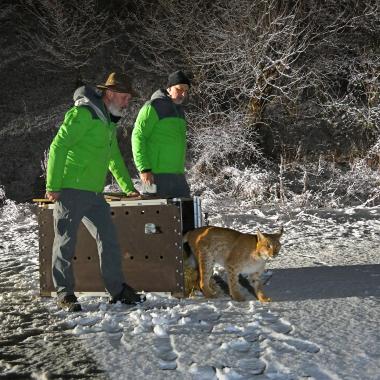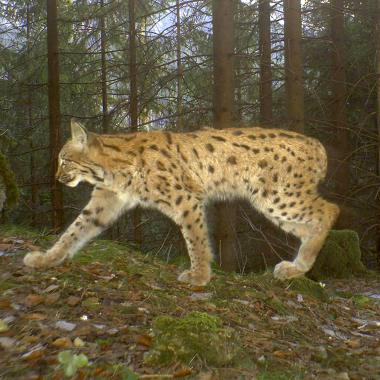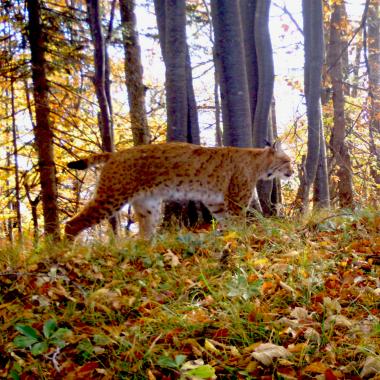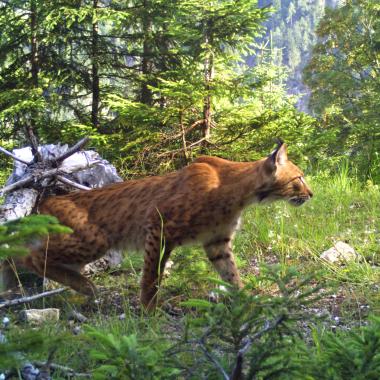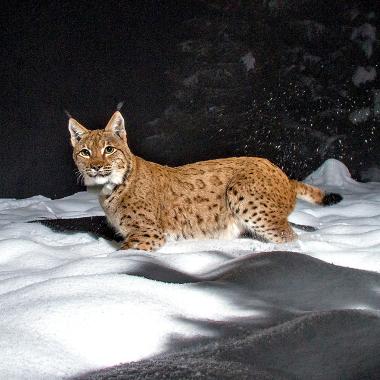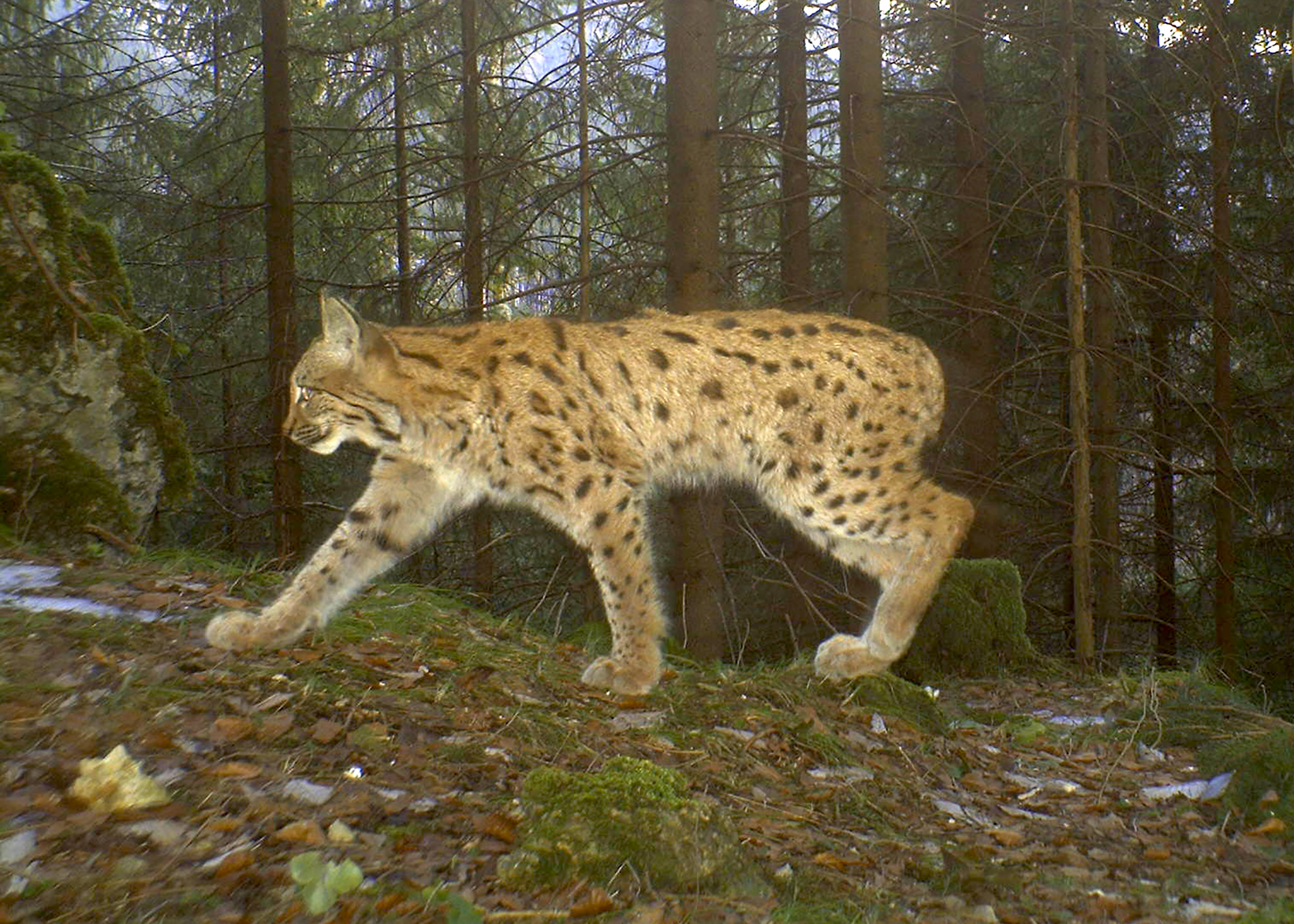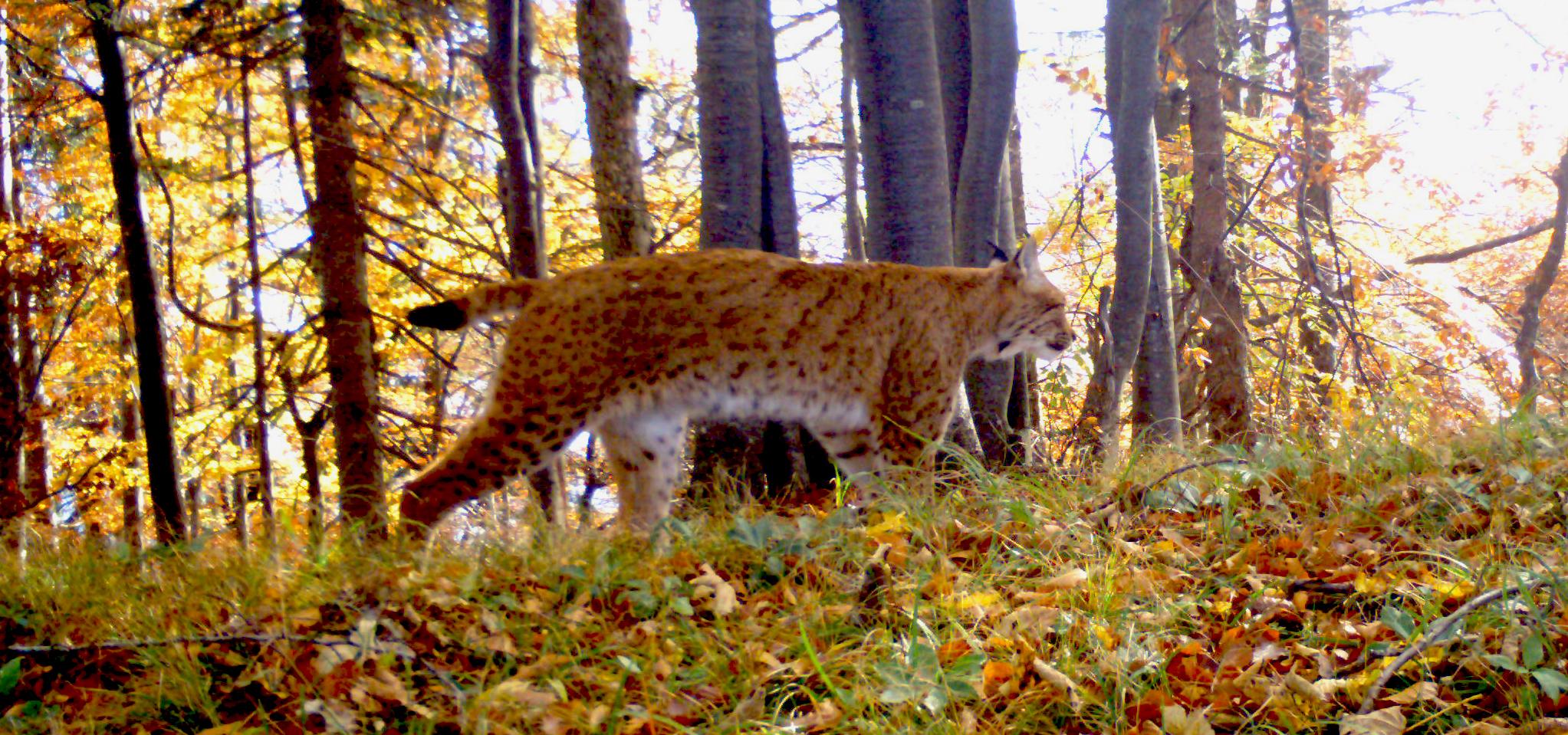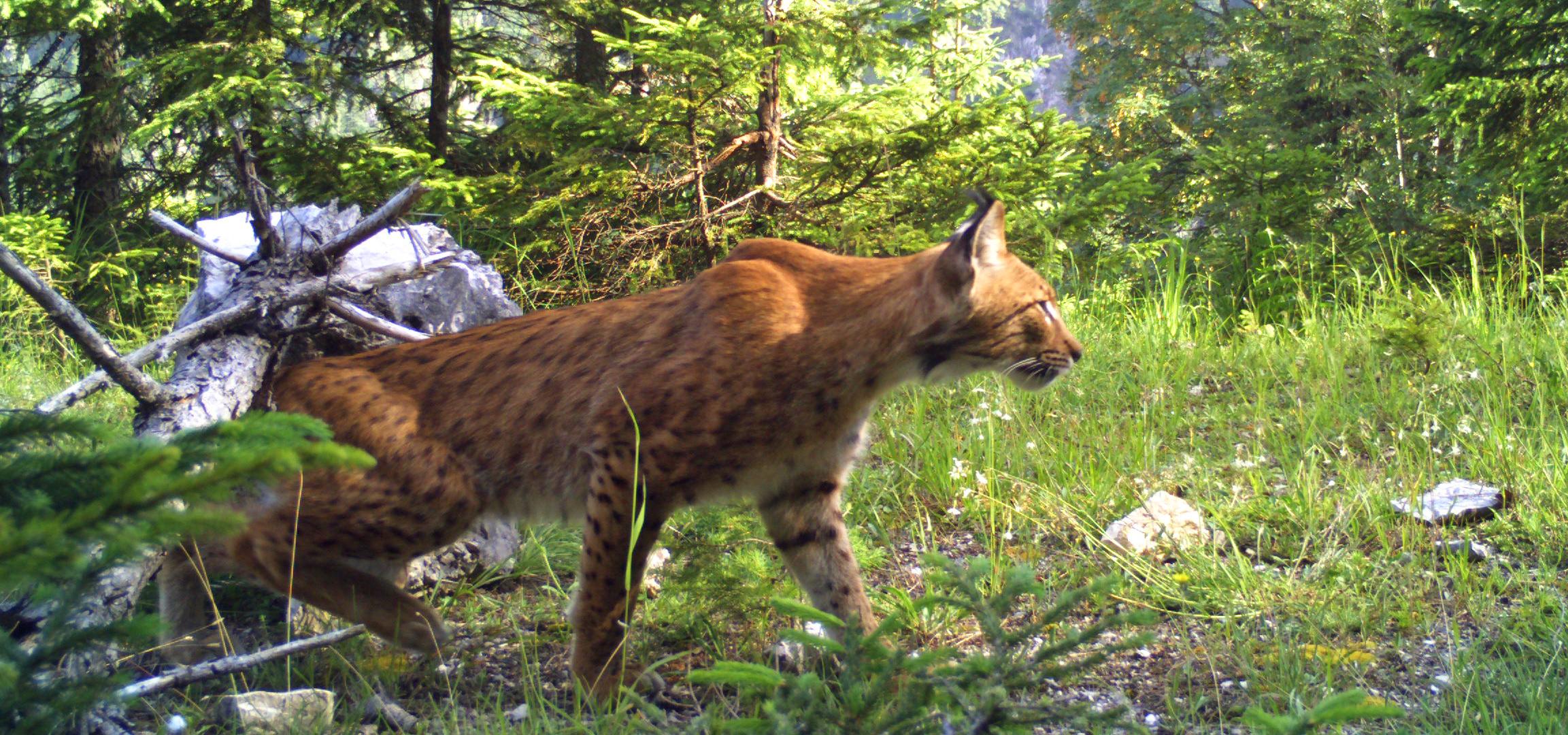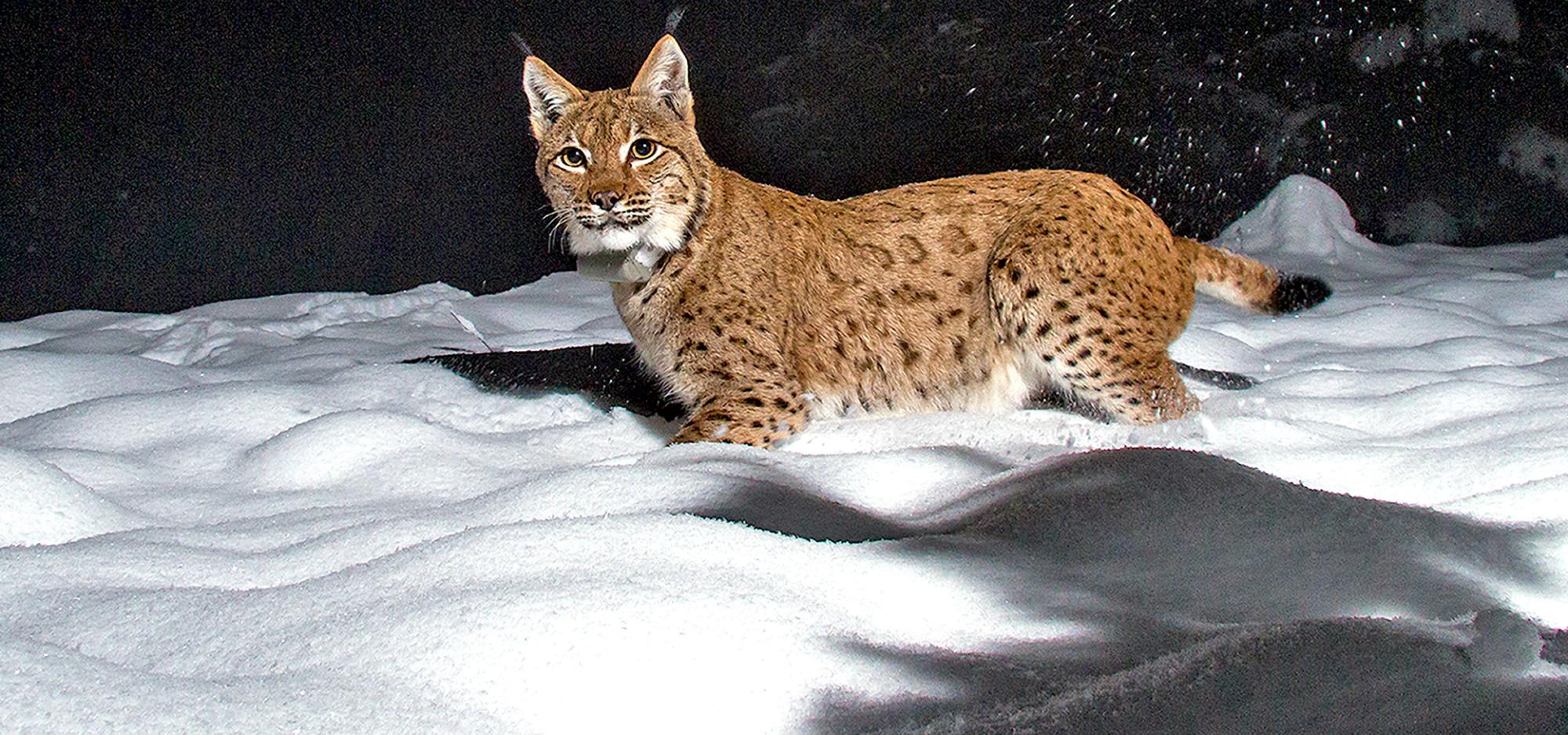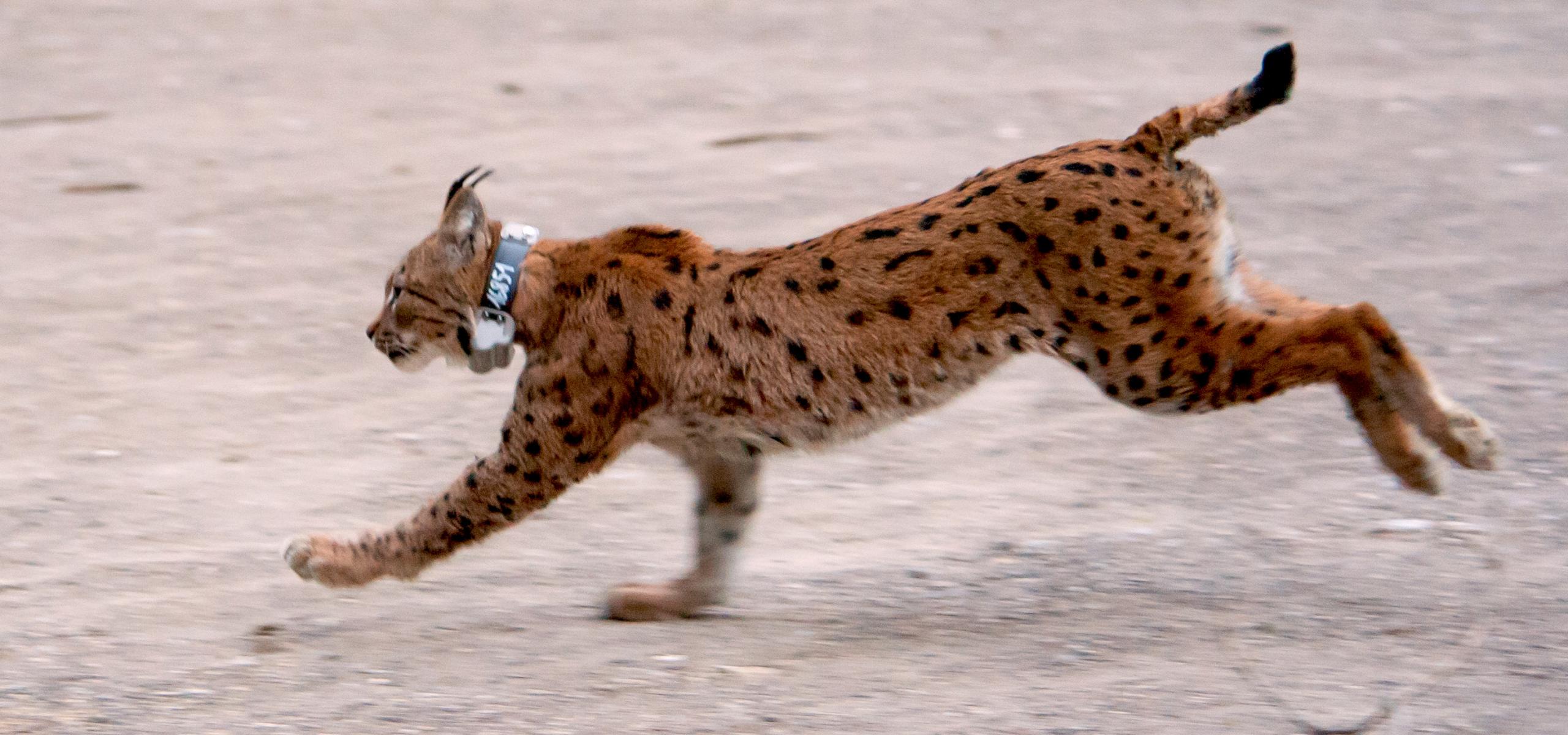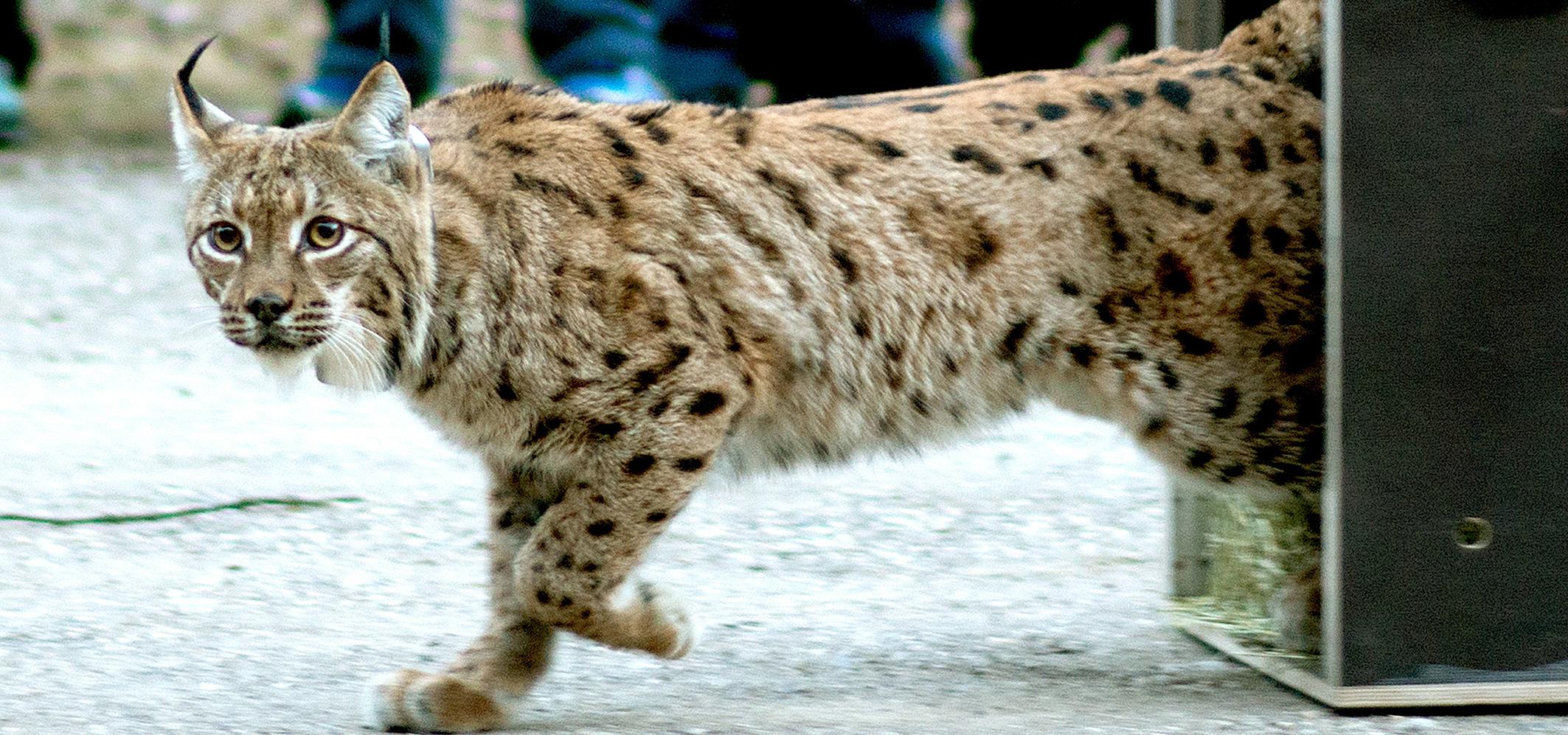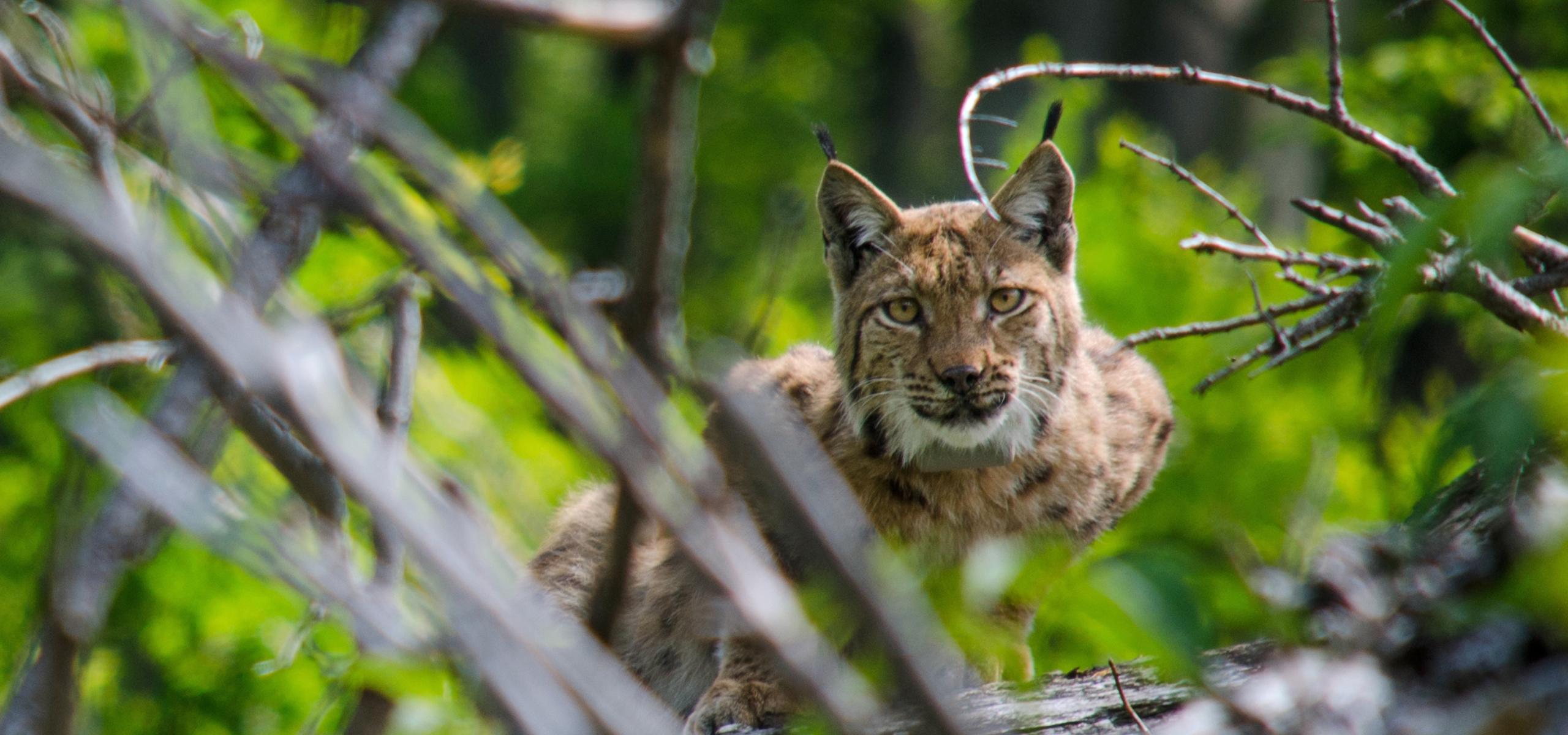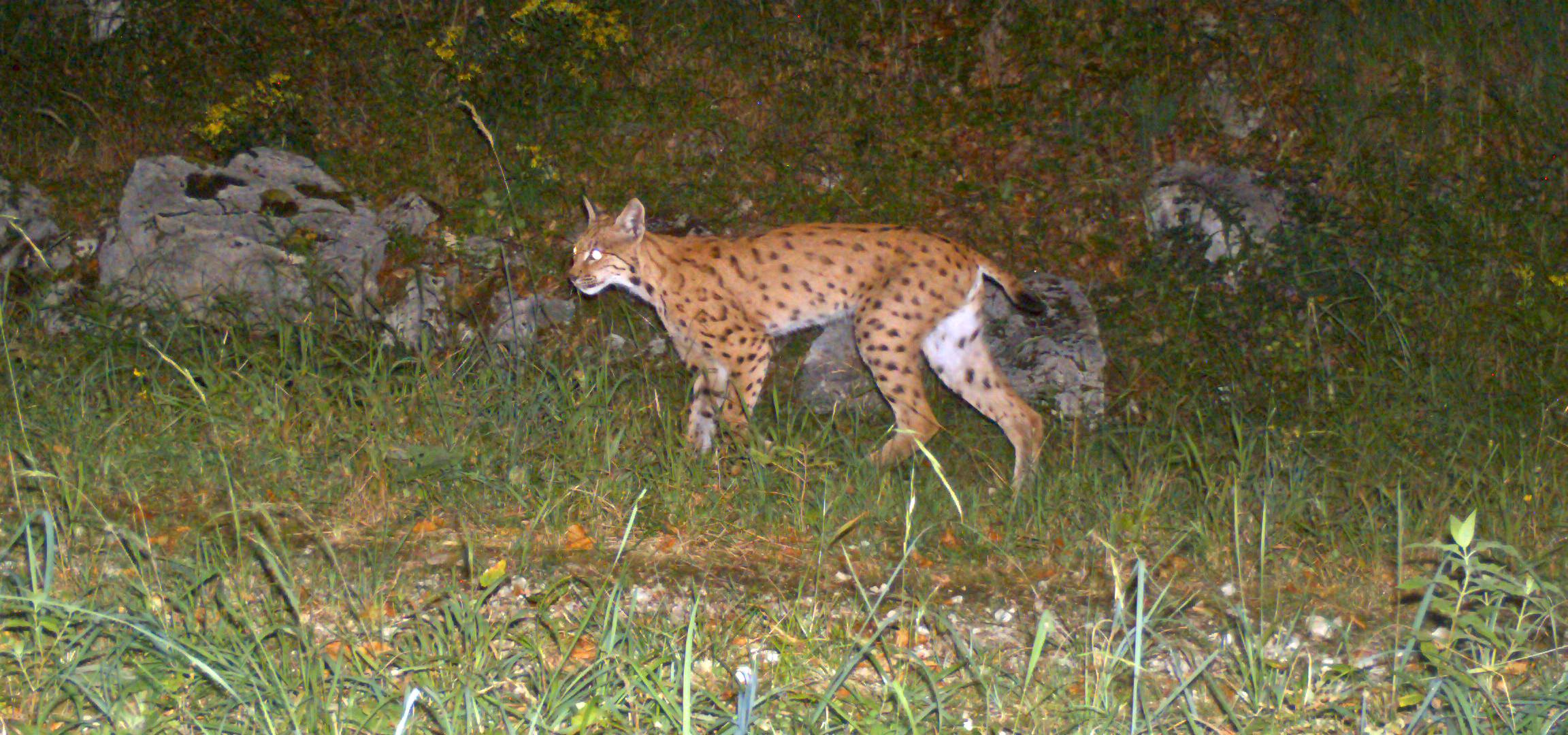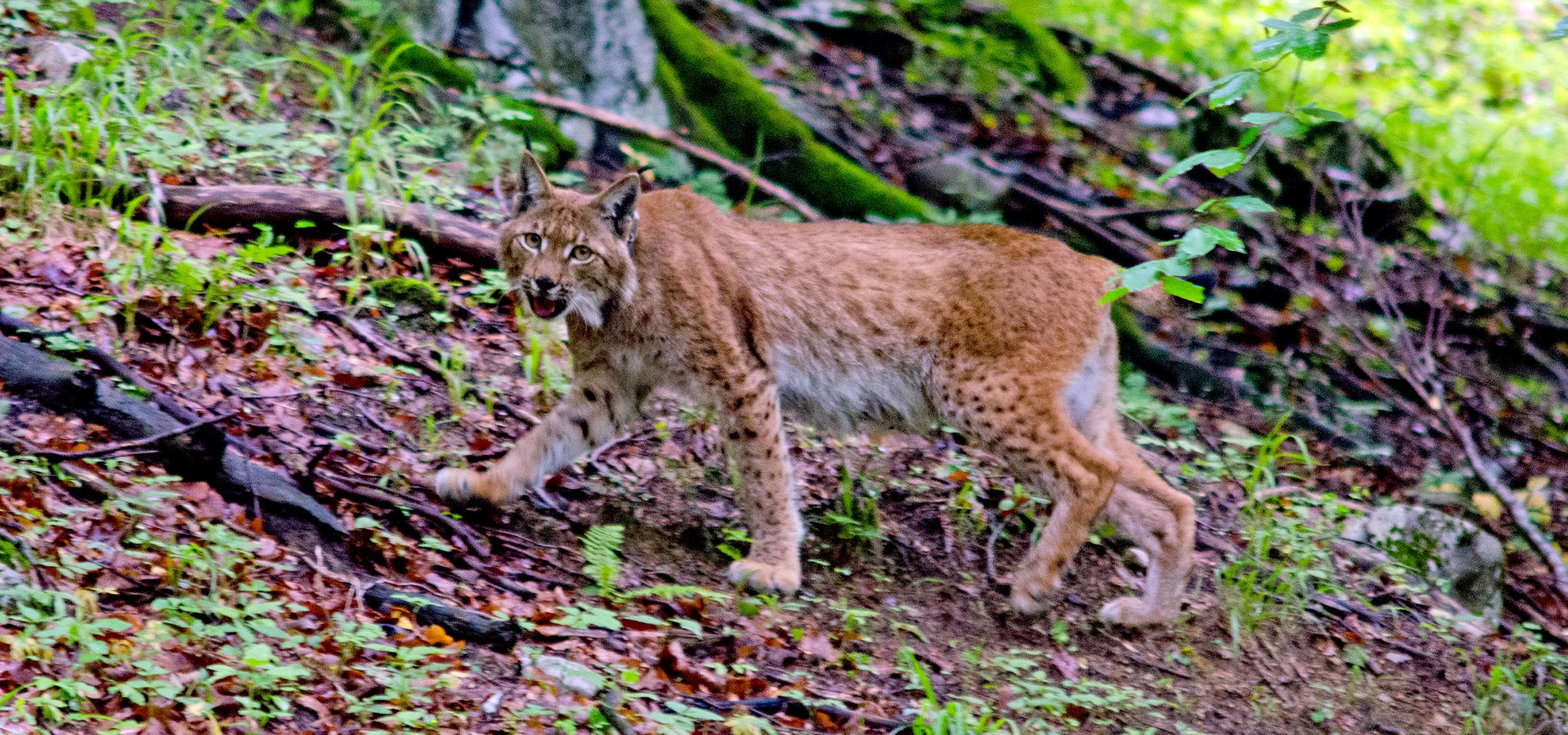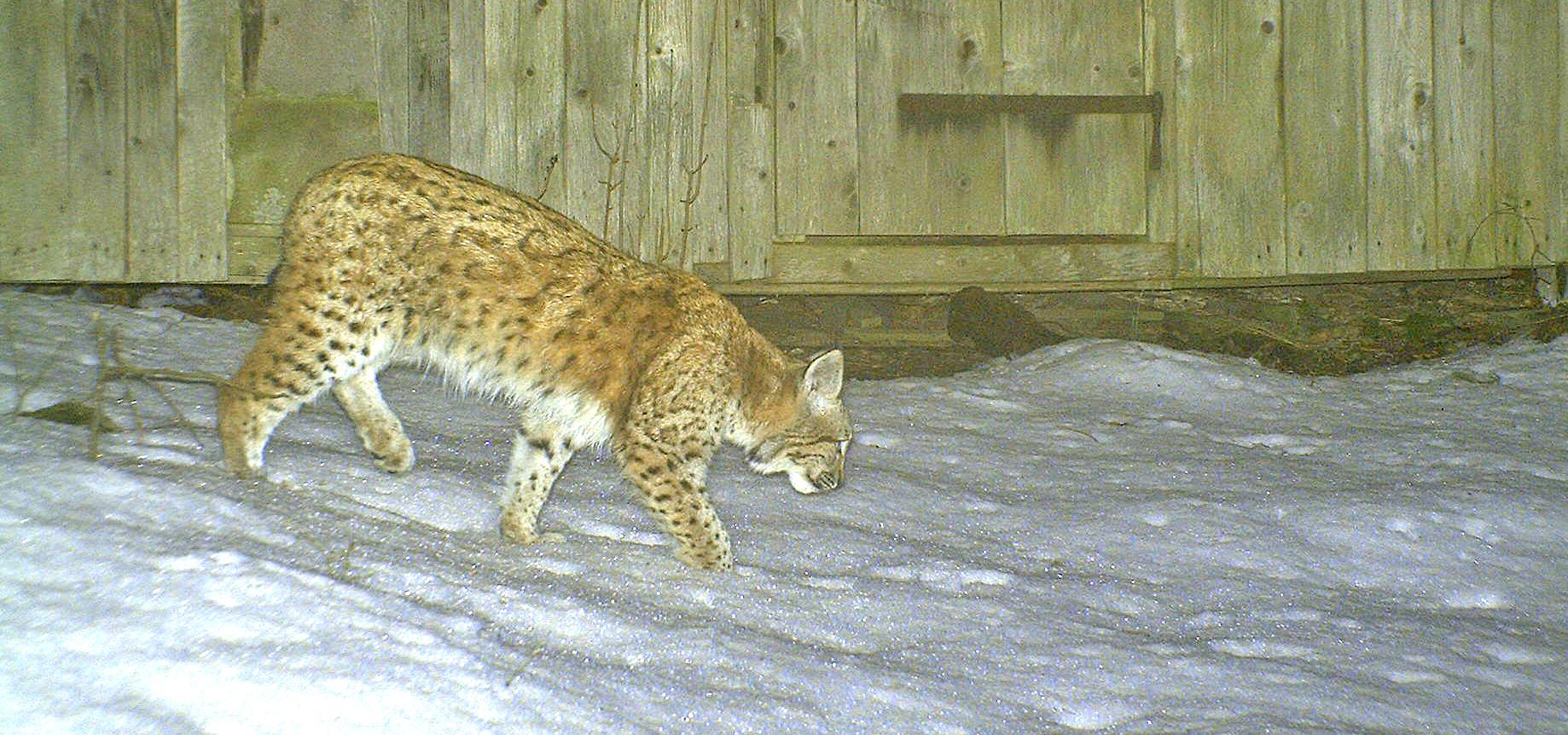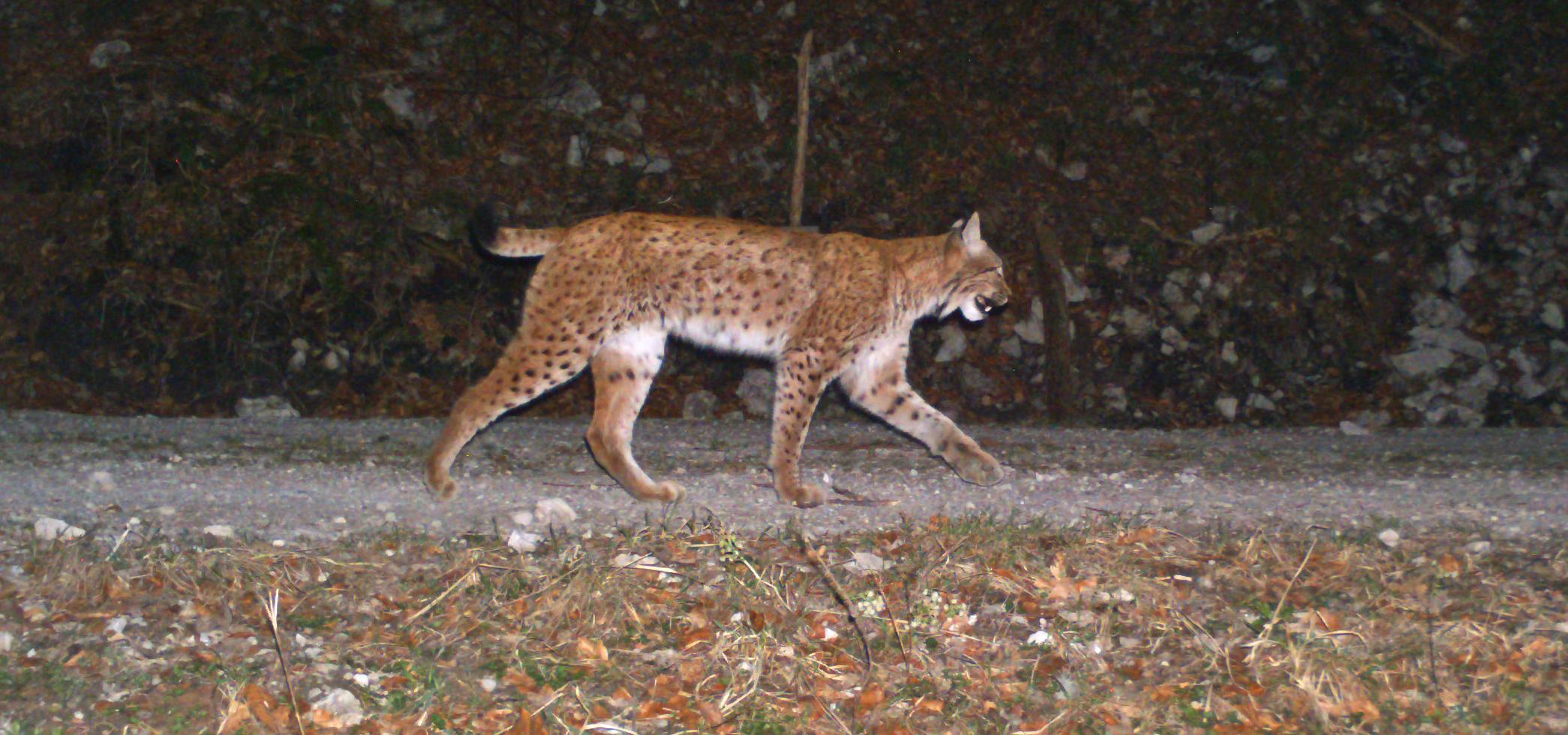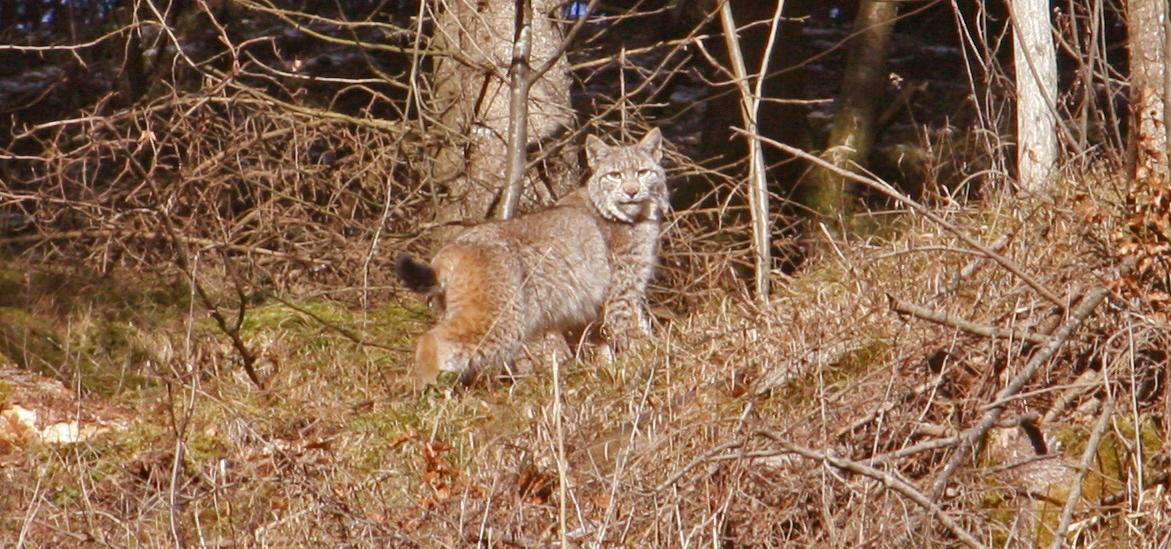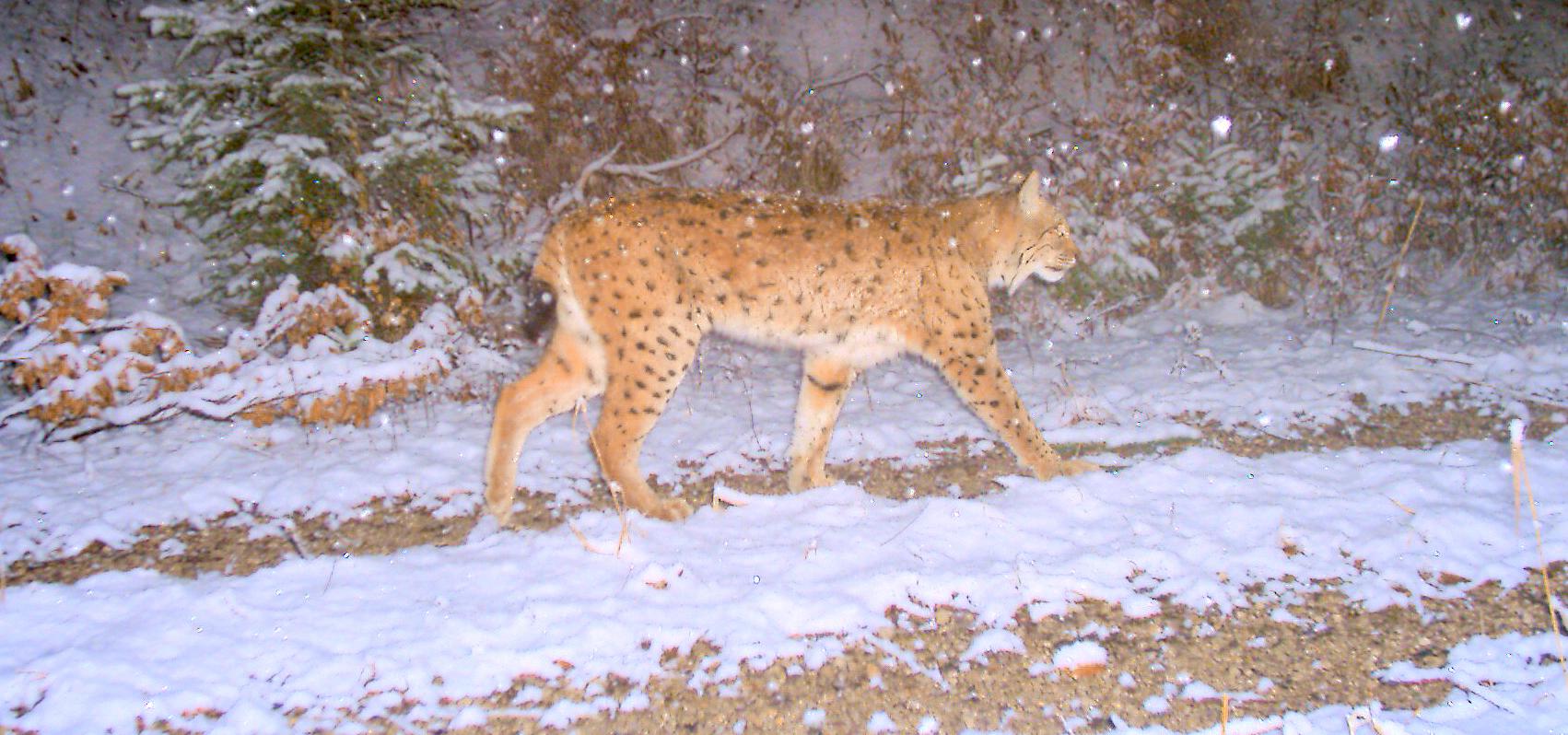A symbol for the return of the wilderness
The lynx
In order to obtain more data and information about the lynx in the national park, Kalkalpen National Park has been carrying out lynx monitoring since 1998 and implementing measures to support the lynx population together with ARGE LUKA. The LUKA working group (Luchs OÖ. Kalkalpen) was founded in 2008 and consists of representatives from Kalkalpen National Park, the Upper Austrian Nature Conservation Association, the Upper Austrian Hunting Association, the Austrian Federal Foresters and the Austrian National Park. Hunting Association, the Austrian Federal Forests, the WWF, the Research Institute of Wildlife Ecology of the University of Veterinary Medicine Vienna (FIWI), the Department of Nature Conservation of the Province of Upper Austria and the Federal Ministry for Climate Protection, Environment, Energy, Mobility, Innovation and Technology.
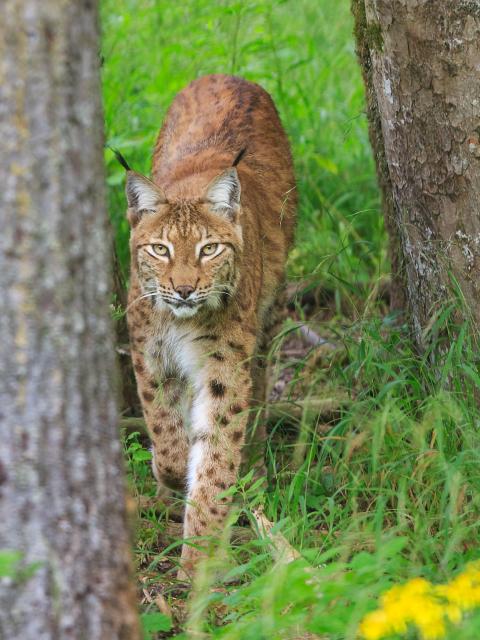
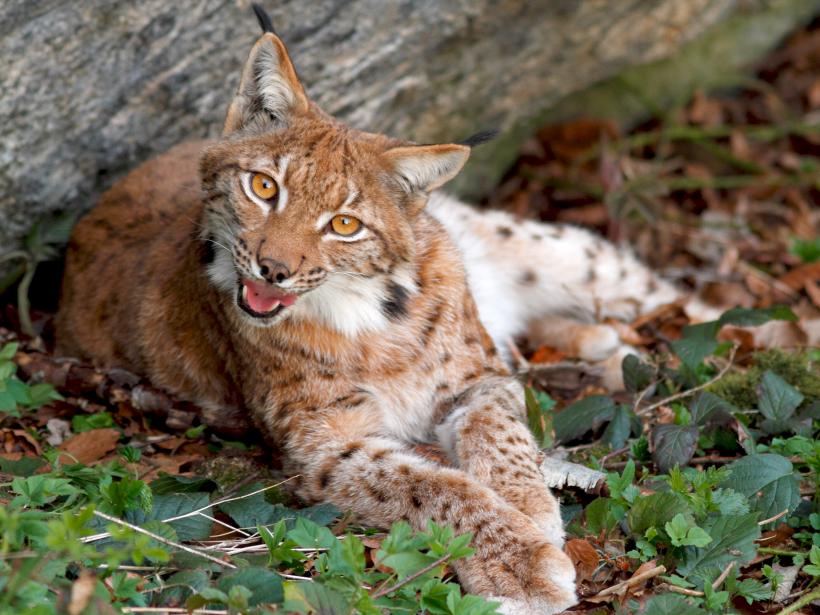
Interesting facts about
our lynxes
Browse through our knowledge database! Under the following links we have already made a preselection of current reports, specialist articles and publications as well as press articles with the search term "lynx".
The lynx in Austria
Austria and Switzerland
On the move on quiet paws
Our five lynxes
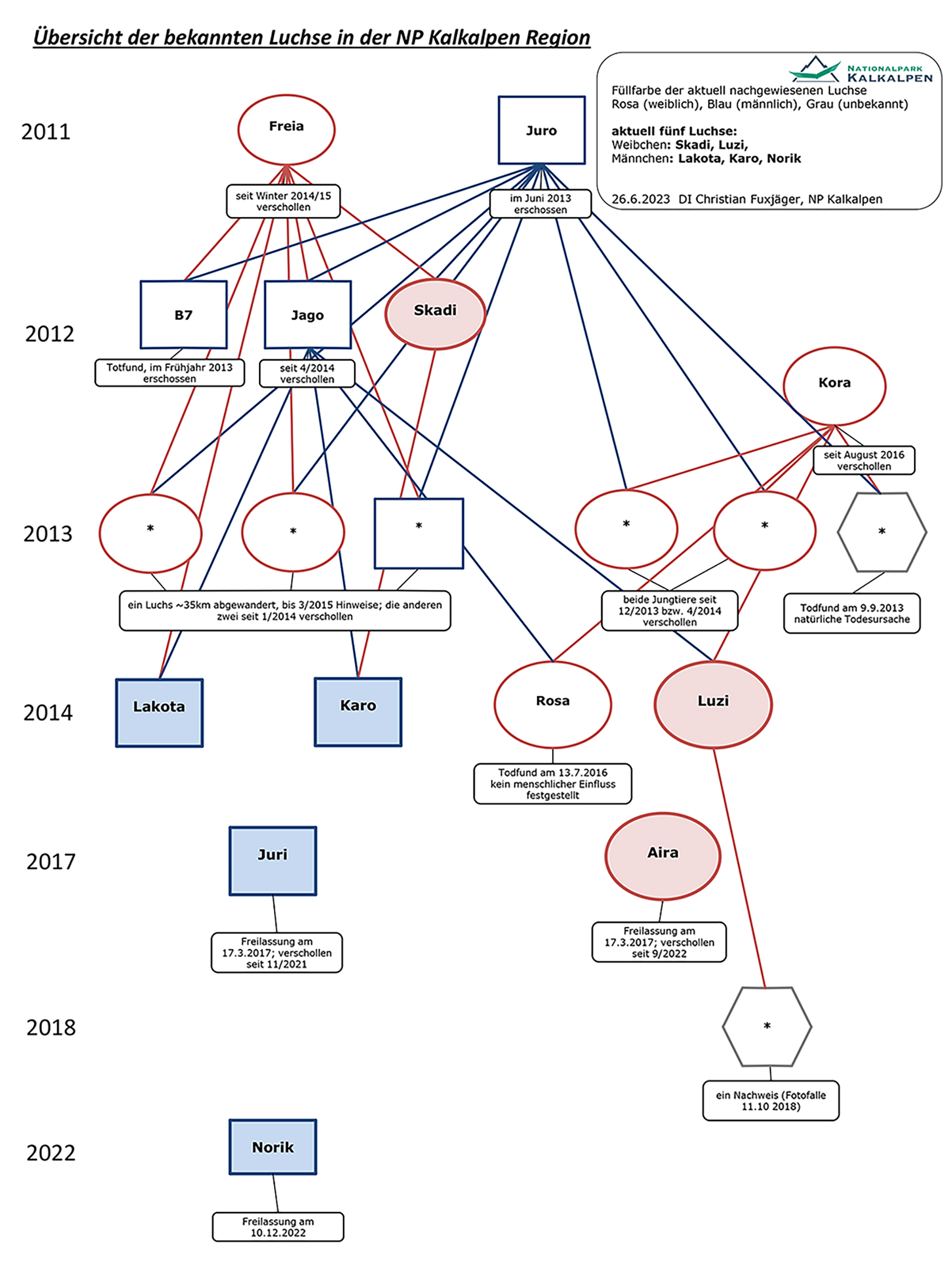
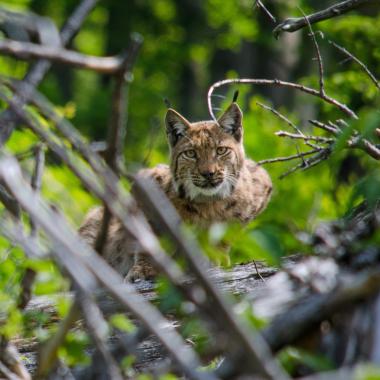
Lynx
missing or dead
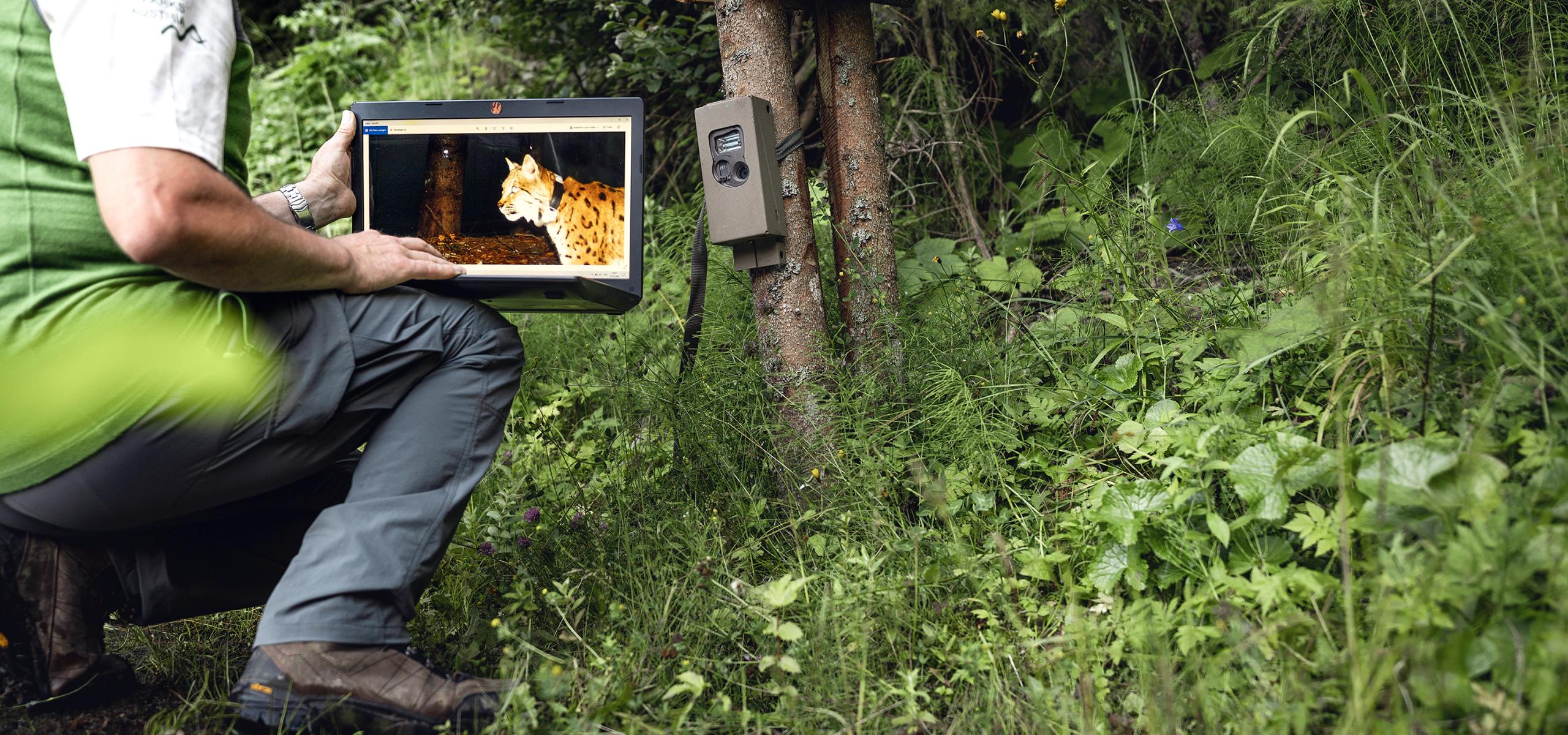
Lynx monitoring
In order to obtain more data and information about the lynx in Kalkalpen National Park , a long-term study has been carried out since 1998:
By 2010, only one lynx had been clearly identified despite the use of photo traps. The presence of this individual has been suspected since 1996 and was first confirmed with a photo trap image in 2000. The male lynx "Klaus" was therefore at least 12 years old in 2012. The natural age of lynxes in the wild is assumed to be up to around 15 years, and the well-known National Park lynx "Klaus" was already on the horizon of the expected age at this time.
The first step towards establishing a lynx population was taken in 2011 with the introduction of the cat "Freia" and the cuder "Juro" and in 2013 with the cat "Kora", all of which originate from Switzerland. Two illegal shootings, which were proven in court, decimated the isolated Kalkalpen National Park population again.
In 2017, the cat "Aira" and the calf "Juri", both also from Switzerland, were therefore relocated to Kalkalpen National Park as "replacement animals" for the two illegally shot lynxes. A total of three females and two males (wild-caught from Switzerland) were reintroduced to Kalkalpen National Park in 2011, 2013 and 2017 on the initiative of ARGE LUKA. The primary goal of the working group is to enable the lynx to survive permanently in the northern Limestone Alps and to ensure the long-term connectivity of the lynx population in the Alps and the Bohemian Massif.
The lynx in the Kalkalpen National Park initially reproduced successfully, but some lynx have gone missing and two animals have been found to have been killed illegally. There was no evidence of reproduction in 2015, 2016 and 2017. In 2018, a single cub was detected once with a photo trap image. However, nothing is known about its whereabouts. From 2019 to 2023, again no juveniles could be detected. There is currently an endangered population of five lynx living in the Kalkalpen National Park area. These are the cats Skadi and Luzi and the cubs Lakota, Karo and Norik. This population is important for the Austrian population as a whole because it acts as an important bridgehead to the Bohemian-Bavarian-Austrian population. In order to establish a healthy Austrian lynx population, the broadest possible genetic basis is required. This can best be achieved if the isolated populations can connect with each other.
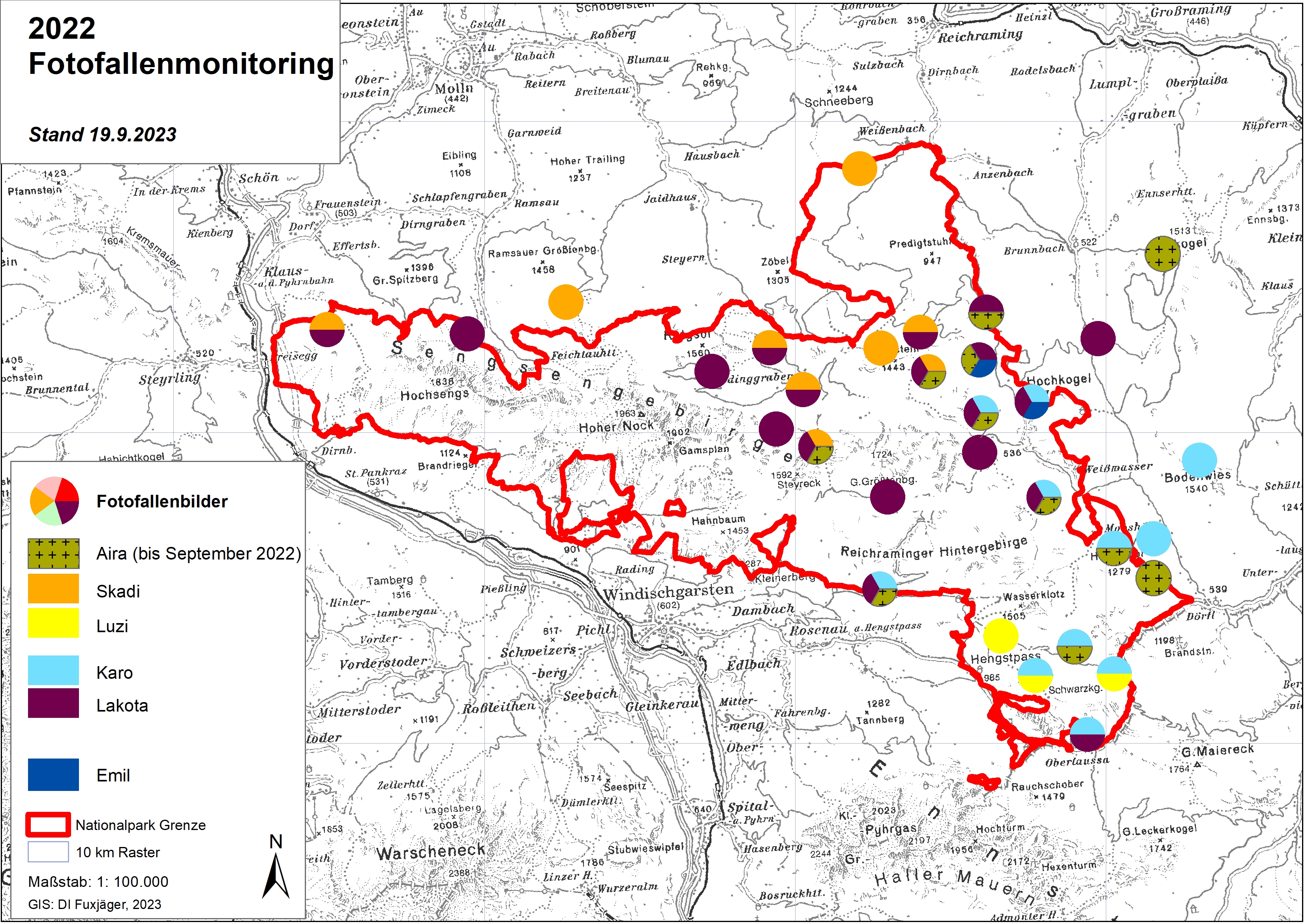
Click on image to enlarge

